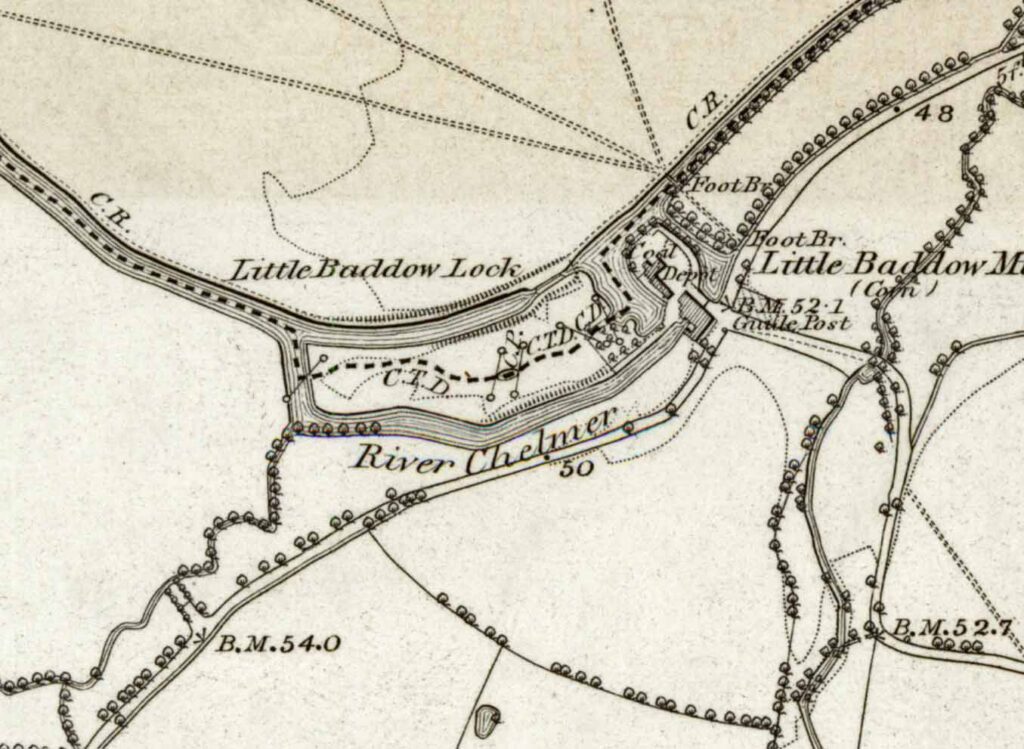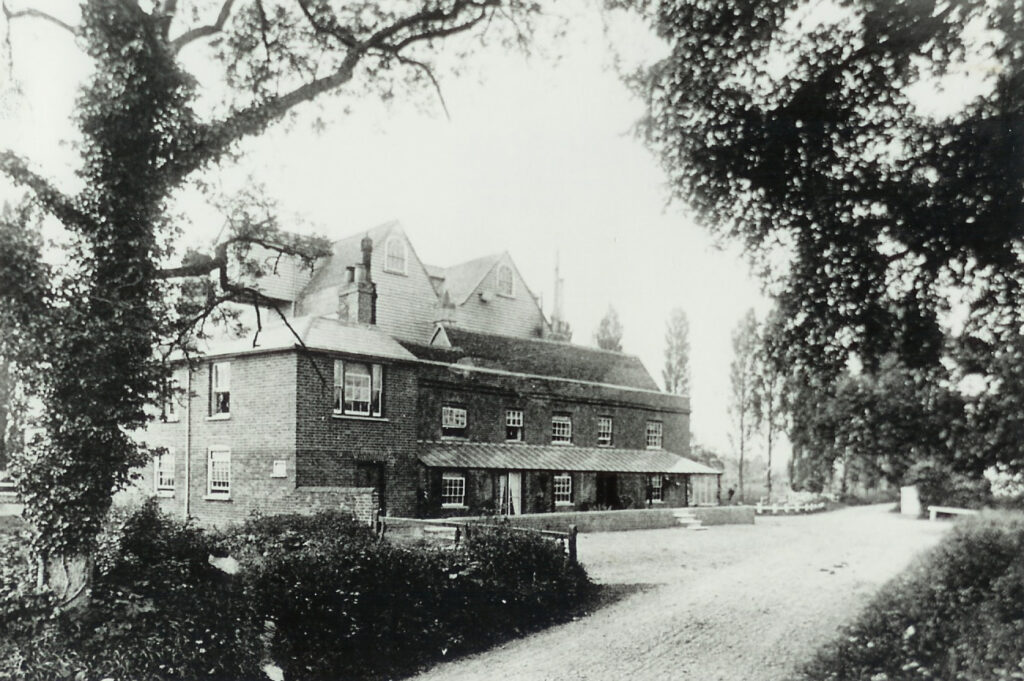Little Baddow water-mill can claim an older recorded history than any other building in the parish, for it is unique in being mentioned in the Domesday Book.
During the eighteenth century, Little Baddow Mill was called Johnson’s Mill as it was tenanted by the Johnson family. In 1777 William Johnson bought the mill 24 acres for £2,000. He later took his nephew Johnson Clark into partnership who continued operating it until he retired around 1811. During this time the river was transformed into a navigation and a canal wharf was attached to the mill. The mill had five pairs of stones and dealt in 375 tons of coal a year at its wharf.
John Piggot bought the mill for £3,600 in 1824 and operated it until 1880. The mill was run by managers, Joseph Phillips and his son of the same name, from about 1830 to the 1870s. In addition to being busy millers they were merchants, dealing in a variety of goods landed at the canal wharf, such as coal, oil-cake, guano and timber. In 1863 the mill dealt in 448 quarters of wheat, 2,927 sacks of flour and 860 tons of coal.

The mill and 13 acres of land were sold in 1880 to Edward Morgan for £2,000. He improved the mill, adding steam machinery to supplement the water power and replacing the stones with rollers, but when the mill burned down in 1892 it was not rebuilt.

The site eventually came into the hands of the Chelmer and Blackwater Navigation Company. They built a house on the site which was let, first to George Smith, who operated a refreshment house and coal business, and then in 1911 to William King who continued the business and after whom the mill became known as King’s Mill. In the late 1920s, his widow, Mrs Matilda King, was a shopkeeper plying teas and refreshments and hiring out rowboats.